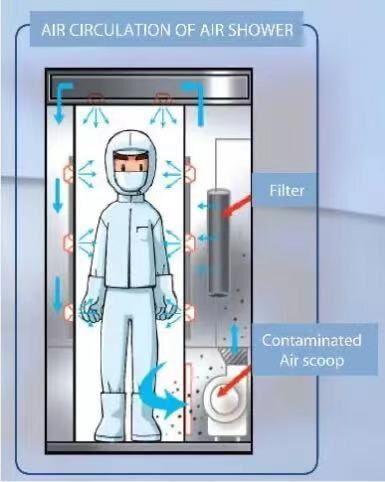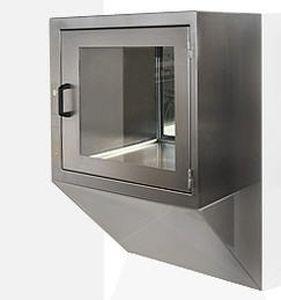Transferring Objects Into a Cleanroom

There are important rules to remember when transferring raw materials into a cleanroom. Products, equipment, and even operators can introduce contaminants which could be extremely dangerous for the controlled environment. In most cases, new items might be wiped down, cleaned, repackaged, or prepared a proper way to enter a cleanroom safely. There are three commonly used transfer methods.
#1: Multiple Cleanroom Bag Method
This method involves utilizing cleanroom bags to protect any materials that are being transitioned into the cleanroom. The number of clean bags per transfer item varies depending on the manufacturing process. When multiple levels of classification are involved, the outmost cleanroom bag is removed at each new level entered. Once it reaches the final level, the last bag is removed. When using this method, contaminants from lower classification areas are not being tracked into the controlled environment. Some manufacturing materials are supplied in several cleanroom bags making the outside bag potentially very contaminated, so it serves to exercise caution when removing it.
#2: Disinfection Method

This method calls for wiping or spraying products or materials with a suitable disinfecting solution before entering the clean area in an airlock. This process supplies greater control of preventing contamination because it regulates the amount and types of disinfectants used. The critical thing to remember is that materials should be wiped down using a traditional wiping technique – wiping from the cleanest to the least clean area using overlapping strokes in one direction. This method can be used by itself, or implemented in addition to the clean bag method. Most companies create their own SOPs (Standard Operating Procedures) for disinfection materials, cleaning locations, and technics, so that identical results can be achieved every time.
#3: Direct Sterilization Method
Direct sterilization using a pass-through autoclave is a commonly used method in healthcare and laboratory settings to ensure the complete sterilization of items before they are transferred between different areas or rooms. A pass-through autoclave, designed with two doors, allows items to be loaded from one side and removed from the other side without compromising the sterile environment.

The direct sterilization method is probably the most effective, but it has a price. The facility would need special equipment such as the pass-through autoclave. Once the materials are placed in one side of the autoclave, the sterilization cycle begins. The process usually includes a vacuum, steam, HEPA air supply and cooling sequence depending on the material.
Certain materials are not allowed in a cleanroom at all. For example, cardboard and wood cannot enter a cleanroom because such materials can shed contaminant fibers, or even bring mold into the controlled environment. Certain products packaged in cardboard must be removed from the box before they enter the room.
Other Transfer Considerations
Another dangerous contamination element are the operators. Personnel working in the cleanroom should go through the disinfection process before entering a cleanroom. There should be a specific gowning room to avoid contaminants from the personnel’s everyday clothing. Every person’s hygiene plays a significant role in contamination control as well. Operators should maintain personal hygiene – taking showers, washing hands, wearing clean clothes. It is essential to educate the staff about appropriate hygiene habits. Controlled environments like biopharmaceutical applications require highly controlled procedures – double gowning, air showers etc. for operators to enter cleanroom area.
The transfer process in a cleanroom is an essential element in contamination control. Unfortunately, the material process training is usually not given enough time, which results in employees and operators missing significant steps. It is crucial that personnel understand the importance and responsibility of their actions and how they might affect the production. It is advised that the management provides vital support and understanding when training the material transfer processes.
GET IN TOUCH
Complete the form below to get in touch with our team.
